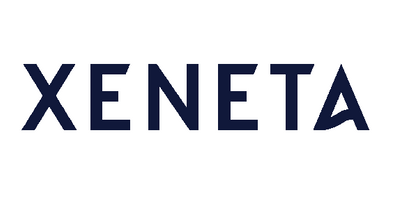Xeneta: Trade War Impacting on Far East
Look beneath the surface of a relatively calm month for long-term contracted ocean freight rates and, says Oslo-headquartered Xeneta, industry observers will see a maelstrom of activity, adjustments and market uncertainty.
According to the latest XSI Public Indices report from Xeneta, the leading ocean freight rate benchmarking and market analytics platform, July saw a marginal decline in rates of 0.4%, with a marked fall in the Far East export benchmark. Meanwhile US exports and European imports performed well.
The global index has now fallen by 2.4% since its all time high in May this year, but remains 1% up year-on-year.
Detailed analysis
XSI provides a unique real-time picture of ocean freight rate developments, with the report complied from the very latest crowd-sourced shipping data, covering over 160,000 port-to-port pairings, with over 110 million data points.
In July that snapshot has to be studied carefully to capture the key details, says Xeneta CEO Patrik Berglund
“On the face of it a fall of 0.4% is ‘nothing to write home about’,” he notes. “It is in keeping with an overall trend of mid- to long-term rates decline that we have seen since this time last year, excluding May’s unexpected upwards surge. However, if we get the magnifying glass out and start examining individual corridors we can see a complex cast of characters playing out an increasingly high stakes game, with the potential for widespread market impact.
“This is definitely something stakeholders in the shipping value chain need to keep abreast of to ensure they get optimal value for their assets, cargoes and businesses.”
Trade war impact
Of particular interest, Berglund observes, is the growing fallout from the US-China trade war.
The XSI Far East import index dropped by just 0.1% in July, but has now fallen by 12.6% since the end of 2018 and 15.5% year-on-year. The Far East export figure for the month declined 4.8%. This can be seen in the context of Chinese import and export trade figures for the first half of 2019, revealing exports to the US slumped by 8.1% to USD 199.4 billion, while imports collapsed, dropping 29.9% to USD 58.9 billion.
“There is a real impact on volumes here,” the Xeneta CEO explains, “and that has obvious ramifications upon rates for the Far East trades. On the face of it the US indices appear to be enjoying better fortunes – with a 2.9% rise for imports (up 12% year-on-year) and a 6.6% boost for exports – but look at the updates from major US ports for the first six months of the year and a more telling picture develops.
“For example, import volumes at San Pedro Bay ports declined by 3.3% year-on-year, while exports through Los Angeles and Long Beach, the key hub for Asia cargoes, are reported* to have fallen by 7.1% for the same period. That suggests we are not at a time of ‘business as usual’ and the container shipping industry has to make adjustments to adapt.”
European moves
Such adjustments are already being made in Europe, he notes. Here carriers are taking action to compensate for poor demand-supply fundamentals, with ‘blanked sailings’ in July and early August set to account for the withdrawal of more than 150,000 TEU during what is traditionally a peak sailing season.
The XSI European figures reveal a rise in import rates of 5.7% for July (up 3.9% year-on-year) with a small gain of 0.7% on the exports benchmark (a 1.5% year-on-year increase).
Interestingly, although the spot market remains under pressure carriers have announced rate increases effective from 1 August on the Far East - North Europe trade. Hapag-Lloyd is introducing an all-in rate of USD 840 per TEU, along with a marine fuel recovery charge of USD 226 per TEU, and CMA CGM is applying an FAK rate of USD 1,150 TEU on the trade.
Positioning for success
“It really is an interesting time,” Berglund concludes, “with actors at a myriad of levels – from the geopolitical to individual carriers – jockeying to position themselves favorably to survive and prosper in the uncertain times ahead. This will continue to feed into a fluctuating rate marketplace, making it imperative for everyone with a stake in the industry to avail themselves of the very latest market data, insight and intelligence.
“Stay informed and stay ahead, that’s the only way forward.”
Oslo-based Xeneta provides unique insight into ocean freight rates by crowdsourcing the very latest rates from leading global shippers. The companies feeding data into the unique software platform include names such as Electrolux, Continental, Unilever, Lenovo, Nestle, L’Oreal, and Thyssenkrupp, amongst others.











